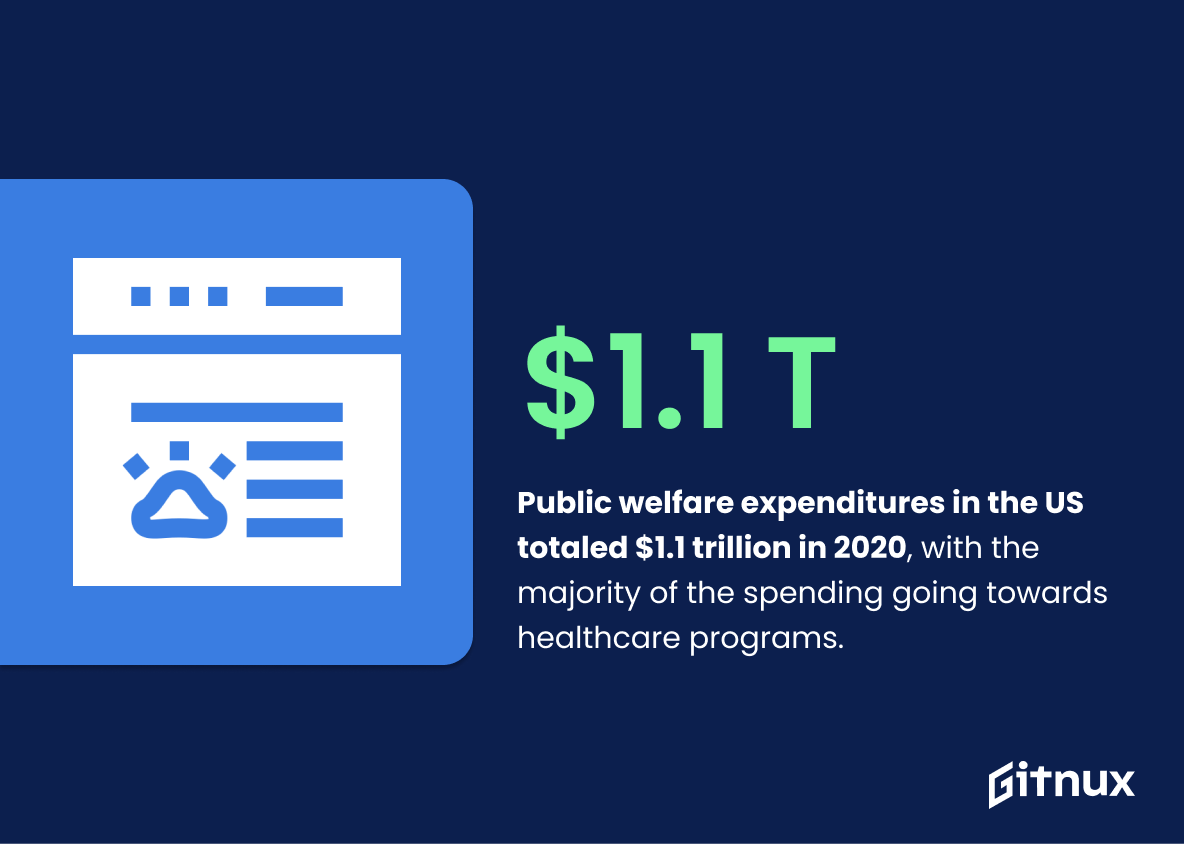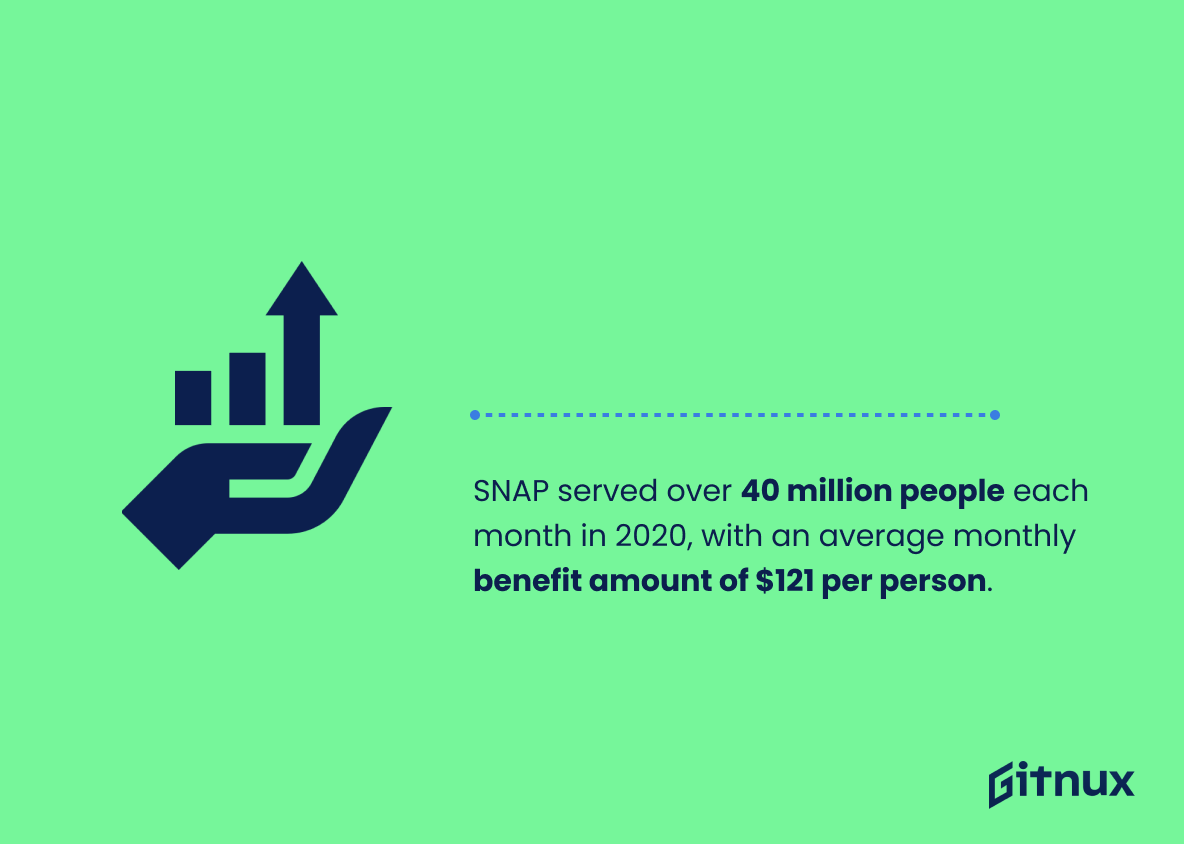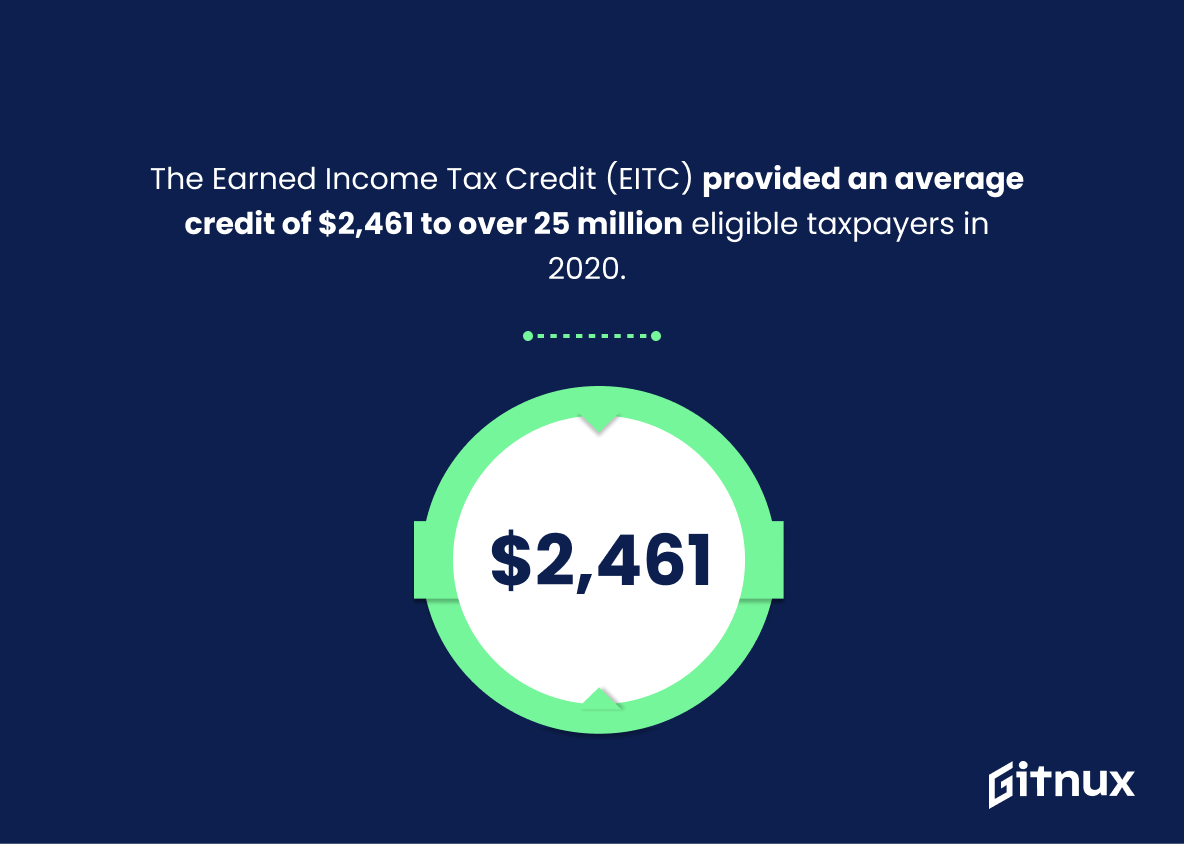The United States is one of the most developed countries in the world, yet there is still a large number of people living in poverty. In this blog post, we will take a look at the current welfare statistics in the US and discuss how they are affecting the lives of those living in poverty.
We will also explore what can be done to help those in need and how the government is responding to the issue. Finally, we will discuss what the future of welfare looks like in the US.
US Welfare: The Most Important Statistics
SNAP served over 40 million people each month in 2020, with an average monthly benefit amount of $121 per person.
9 million children were enrolled in CHIP in FY 2020, a federal welfare program that provides health insurance to low-income families.
US Welfare Statistics Overview
Public welfare expenditures in the US totaled $1.1 trillion in 2020, with the majority of the spending going towards healthcare programs.
In Fiscal Year 2020, the US government spent $1.1 trillion on welfare programs, with the majority of spending going to healthcare programs such as Medicaid. There was also a significant spending on food assistance (SNAP), housing assistance (Section 8), and financial assistance to low-income workers through the Earned Income Tax Credit (EITC).
Approximately 7.4 million people are receiving Supplemental Security Income (SSI) benefits, with an average monthly payment of $577.99.
This shows the scale of the SSI program and the financial assistance it provides to low-income individuals who are aged, blind, or disabled. It also highlights the need for continued support for the program, as the average monthly payment is not enough to cover basic needs such as food, clothing, and shelter.
SNAP served over 40 million people each month in 2020, with an average monthly benefit amount of $121 per person.
Thus, we can see an importance of SNAP in providing food assistance to low-income individuals and families. It also shows the significant number of people that rely on the program each month, and the average benefit amount they receive. This information is important for understanding the impact of SNAP on poverty and food insecurity in the US.
9 million children were enrolled in CHIP in FY 2020, a federal welfare program that provides health insurance to low-income families.
The Housing Choice Voucher Program, also known as Section 8, is the largest housing assistance program in the US, providing assistance to 5.5 million households in 2020. This statistic shows how essential rental subsidies are for low-income individuals and families, as they are often unable to afford the full cost of rent without assistance.
The Earned Income Tax Credit (EITC) provided an average credit of $2,461 to over 25 million eligible taxpayers in 2020, with the aim of incentivizing work and reducing poverty for working families.
This demonstrates the effectiveness of the EITC in helping to reduce poverty and incentivize work among low-income workers in the United States. It is an important part of the US welfare system and helps to ensure that those in need are able to access the resources they need to make ends meet.
Conclusion
In conclusion, the United States welfare system is a complex system that affects millions of Americans. While there are many positive aspects of the system, there are also many areas that need improvement.
The statistics presented in this blog post show that there is still much work to be done in order to ensure that all Americans have access to the resources they need to lead healthy and productive lives. It is important for us to continue to monitor and analyze the welfare system in order to ensure that it is providing the necessary support to those who need it most.
References
1 – https://www.urban.org/policy-centers/cross-center-initiatives/state-and-local-finance-initiative/state-and-local-backgrounders/public-welfare-expenditures
2 – https://federalsafetynet.com/welfare-budget/
3 – https://www.ssa.gov/policy/docs/statcomps/supplement/
4 – https://www.fns.usda.gov/pd/supplemental-nutrition-assistance-program-snap
5 – https://www.medicaid.gov/medicaid/program-information/medicaid-and-chip-enrollment-data/report-highlights/index.html
6 – https://www.census.gov/library/stories/2022/05/who-is-receiving-social-safety-net-benefits.html
7 – https://www.eitc.irs.gov/eitc-central/statistics-for-tax-returns-with-eitc/statistics-for-tax-returns-with-the-earned-income





